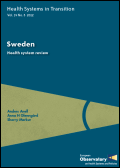LU POUR VOUS DE JUIN 2012 :
 livres du mois
livres du mois
 sites du mois
sites du mois
 working papers
working papers
Tous les lu pour vous
LES LIVRES DU MOIS
Le renoncement aux soins. Actes du colloque du 22 novembre 2011.
Ministère chargé de la Santé. Direction de la Recherche - des Etudes de l'Evaluation et des Statistiques. (Drees)
Paris : Drees : 2011/03 : 150 p.
La DSS et la DREES ont souhaité explorer cette notion de renoncement aux soins, afin de bien mesurer le phénomène et de mieux comprendre ce qu'il recouvre, d'en connaître les déterminants, et de réfléchir au rôle des politiques publiques pour en limiter l'ampleur. Plusieurs travaux de recherche ont été présentés lors du colloque « Renoncement aux soins » qui s'est tenu à Paris en novembre dernier. La présentation de ces travaux a été suivie par une table ronde donnant la parole aux différents acteurs du système de soins autour d'un débat sur la question suivante : « Comment mieux garantir l'accessibilité financière aux soins ? ». Ce recueil retranscrit les différents exposés de ce colloque ainsi que les débats qui les ont suivis.
Innover contre les inégalités de santé.
Brechat P.H. / dir., Lebas J. dir., Bachelot-Narquin R. / préf., Sicard D./ dir.
Rennes : Presses de l'EHESP : 2012 : 496 p.
Personnes précaires, personnes âgées, patients atteints de pathologies multiples ou chroniques, migrants... En France aujourd'hui, un grand nombre de ces patients dits « complexes » ne bénéficient pas d'un accès aux soins. Pareil constat remet en cause la performance de notre système de santé et les acquis de l'assurance maladie pour tous. Depuis vingt ans, des professionnels et acteurs de santé innovent pour un accès aux soins et à la santé pour tous et partout. C'est le cas dans les permanences d'accès aux soins de santé (PASS), comme la policlinique Baudelaire de l'hôpital Saint-Antoine (AP-HP). Des professionnels de la prise en charge de ces patients complexes, qui ont participé à ces initiatives originales, témoignent ici de leurs savoir-faire?: parcours de santé global, coopération entre professionnels de santé et du social, recherches interdisciplinaires... Ils appellent de leurs vœux la création de centres de santé primaire polyvalents (CSPP), dont ils détaillent les éléments clés, à commencer par le caractère global de la prise en charge?: infirmière, médecin, assistante sociale, psychologue,?etc. Ces propositions d'organisation intégrée rejoignent celles portant sur la planification de la santé et l'instauration d'allocations de ressources - autant d'innovations visant à réduire des inégalités de santé en constante augmentation. L'ouvrage s'ouvre sur un état des lieux de la précarité sanitaire en France. Il se clôt sur ces enjeux de santé qui sont aussi des enjeux de société, avec des contributions de Didier Tabuteau, Claude Evin, Xavier Emmanuelli, Élisabeth Tomé-Gertheinrichs... et une postface de Bernard Kouchner.
L'hôpital expliqué : son organisation, son environnement.
Guinchard P., / préf., Vincent G. / préf.
Paris : Fédération Hospitalière de France ; Paris : Héral : 2011 : 256 p.
Cet ouvrage permet de replacer l'hôpital dans son contexte et contribue à une meilleure compréhension du fonctionnement et de l'organisation hospitalière. Après une introduction présentant les grandes étapes historiques de l'hôpital et les chiffres clés de l'hôpital public, la première partie fait le point sur les établissements publics de santé. Le statut, les structures, les missions, le financement de ces établissements sont tour à tour décrits et des points particuliers sont examinés tels que les droits des patients, la gestion du risque, la responsabilité juridique, la qualité, ou bien encore, les particularités des assistances publiques. Puis, la deuxième partie de l'ouvrage s'intéresse aux spécificités du secteur psychiatrique : l'organisation sectorielle, les différents modes d'hospitalisation (hospitalisation libre, hospitalisation sans consentement), les équipements, l'usager en santé mentale. Enfin, la troisième partie traite du secteur social et médico-social et aborde notamment le statut juridique des services et établissements d'hébergement pour les personnes âgées et les personnes handicapées, la stratégie de l'établissement, les droits des résidents, le fonctionnement financier des établissements autonomes du secteur social et médico-social, la démarche qualité, et enfin, la planification avec le régime des autorisations et les schémas gérontologiques
Le travail contre la santé ?
Beuret-Siess R., Dupas T., Grosvernier A. et al., Le Garrec S. / éd
Paris : L'Harmattan : 2012 : 296 p.
Cet ouvrage collectif propose des éléments de réponse et des pistes de réflexion sur deux problématiques majeures : la santé au travail et la place des seniors dans les sphères professionnelles. Quels sont les enjeux de la santé au travail ? Du travail sur la santé ? Comment analyser les changements de la gestion du travail et des ressources humaines apparus au cours des dernières décennies ? Peut-on faire un lien entre ces nouveaux modèles de management et l'augmentation des pathologies psychiques ? En quoi l'emploi des seniors va devenir une problématique incontournable ces prochaines années ? Pourquoi les seniors restent-ils perçus négativement dans les sphères professionnelles ? Cet ouvrage s'est attaché à répondre à ces questions en proposant un état des lieux sur la santé au travail, ses conséquences économiques, politiques, sanitaires et sociales ainsi que sur les particularismes associés aux seniors (d'après 4ème de couv).
Health system review : Sweden
Revue du système de santé : Suède
Anell A., Glenngard A.H., Merkur S.
Copenhague : OMS Bureau régional de l'Europe : 2012 : 159 p.
The Health system profiles (HiTs) are country-based reports that provide a detailed description of health systems and of policy initiatives in progress or under development. HiTs examine different approaches to the organization, financing and delivery of health services and the role of the main actors in health systems. They also describe the institutional framework, process, content, and implementation of health and health care policies, highlighting challenges and areas that require more in-depth analysis. Sections include: Geography and sociodemography; Political and economic context; Health status; Organizational structure; Decentralization and centralization; Patient empowerment; Health care financing; Health expenditure; Population coverage; Pooling; Purchasing; Payment mechanisms; Regulation and planning; Physical and human resources; Provision of services; Public health; Primary care; Hospital care; Emergency care; Social care; Palliative care; Mental health care; Dental care; Pharmaceuticals; Health care reforms; Assessment of the health system. This new HiT (Health Systems in Transition) health system review for Sweden reflects the more critical attitude that has been taken towards the traditional model of publicly organised and decentralized health services. Reforms that started in the 1990s have gradually diversified the spectrum and introduced new forms of governance, also aiming to extend the level of choice and responsiveness towards patients. Despite the fact that health outcomes and clinical quality in Sweden may be among the best in the world, much focus has been put in recent years on increasing regional transparency and improving the safety, quality and efficiency of services. The further development of primary care and elderly care as well as a better coordination between providers have been priorities for policy makers.
Participatory action research approaches and methods : connecting people, participation and place.
Approches et méthodes de la recherche-action participative : relier les individus, la participation et le lieu.
Kindon S. / éd., Pain R. / éd., Kesby M. / éd.
New York : Routledge : 2010 : XXIV-260 p.
Participatory Action Research (PAR) approaches and methods have seen an explosion of recent interest in the social and environmental sciences. PAR involves collaborative research, education and action which is oriented towards social change, representing a major epistemological challenge to mainstream research traditions. It has recently been the subject of heated critique and debate and rapid theoretical and methodological development. This book captures these developments, exploring the justification, theorisation, practice and implications of PAR. It offers a critical introduction to understanding and working with PAR in different social, spatial and institutional contexts. The authors engage with PAR's radical potential, while maintaining a critical awareness of its challenges and dangers. The book is divided into three parts. The first part explores the intellectual, ethical and pragmatic contexts of PAR; the development and diversity of approaches to PAR; recent poststructuralist perspectives on PAR as a form of power; the ethic of participation; and issues of safety and well-being. Part two is a critical exploration of the politics, places and practices of PAR. Contributors draw on diverse research experiences with differently situated groups and issues including environmentally sustainable practices, family livelihoods, sexual health, gendered experiences of employment, and specific communities such as people with disabilities, migrant groups, and young people. The principles, dilemmas and strategies associated with participatory approaches and methods including diagramming, cartographies, art, theatre, photovoice, video and geographical information systems are also discussed. Part three reflects on how effective PAR is, including the analysis of its products and processes, participatory learning, representation and dissemination, institutional benefits and challenges, and working between research, action, activism and change.The authors find that a spatial perspective and an attention to scale offer helpful means of negotiating the potentials and paradoxes of PAR. This approach responds to critiques of PAR by highlighting how the spatial politics of practising participation can be mobilised to create more effective and just research processes and outcomes. The book adds significant weight to the recent critical reappraisal of PAR, suggesting why, when, where and how we might take forward PAR's commitment to enabling collaborative social transformation (4e de couverture).
LES SITES DU MOIS DE JUIN
Data.gouv.fr
www.data.gouv.fr/
Presentation
Ce portail unique interministériel est destiné à rassembler et à mettre à disposition librement l'ensemble des informations publiques de l'Etat, de ses établissements publics administratifs et, si elles le souhaitent, des collectivités territoriales et des personnes de droit public ou de droit privé chargées d'une mission de service public. Le lancement de Data.gouv.fr s'accompagne de celui d'une "licence ouverte" d'utilisation des données qui autorise notamment la reproduction et l'adaptation de ces données, y compris à des fins commerciales. L'ensemble des données publiques, téléchargeables gratuitement, se présentent comme des données brutes (aux formats CSV, XML, Excel). La recherche se fait soit par mots-clés libres, soit par producteurs de données et (ou) couverture géographique et (ou) thématique Parmi les nombreux participants se trouve les ministères chargés de la santé, du travail, des affaires sociales, l'Insee… Une boite à idées et un forum dédié complète le site.
Epsilon
www.epsilon.insee.fr/jspui/
Presentation
Ce site initié par l'INSEE se veut l'entrepôt des publications numériques de la Statistique Publique. Epsilon est un dispositif de conservation stable et de diffusion de long terme des publications électroniques de l'Insee et des Services Statistiques ministériels (dont la Dares et la Drees, encore non entièrement finalisé) dans une logique et avec les outils des Archives ouvertes. Ce site offre la possibilité de consulter des documents en texte intégral, et aussi de collecter les métadonnées qui s'y rapportent. Différents modes d'interrogation sont disponibles : par organismes, par collection, par date, par auteur, par titre, par thème Insee, etc.
Ministère de la santé – DREES
http://www.drees.sante.gouv.fr/
Presentation
Rattaché au site internet du ministère de la santé, cet espace internet permet la consultation des travaux, publications et données statistiques produites par la Direction de la recherche, des études, de l'évaluation et des statistiques (Etudes et résultats, documents de travail, rapports et ouvrages, publications régionales). Il offre également un accès aux principales sources de données sanitaires et sociales, FINESS, ainsi qu'aux données locales. Il présente les grandes enquêtes menées par la Drees, interrogeables par thématiques. Présentation de la mission recherche MIRE. Possibilité de s'inscrire à une newsletter.
VU DE L'ETRANGER : QUELQUES WORKING PAPERS ANALYSES
Assurance maladie
Are the Dimensions of Private Information More Multiple than Expected? Information Asymmetries in the Market of Supplementary Private Health Insurance in England. 

Les multiples aspects des informations privées. Les asymétries d'information sur le marché de l'assurance complémentaire de santé privée en Angleterre.
Karlsson M., Klohn F., Rickayzen B.
Darmstadt : Technische Universittat Darmstadt : 2012/04 : 20 p.
This study reexamines standard econometric approaches for the detection of information asymmetries on insurance markets. It claims that evidence based on a standard framework with 2 equations, which uses potential sources of information asymmetries, should stress the importance of heterogeneity in the parameters. It argues that conclusions derived from this methodology can be misleading if the estimated coefficients in such an `unused characteristics' framework are driven by different parts of the population. It shows formally that an individual's expected risk from the perspective of insurance, conditioned on certain characteristics (which are not used for calculating the risk premium), can equal the population's expectation in risk - although such characteristics are both related to risk and insurance probability, which is usually interpreted as an indicator of information asymmetries. It provides empirical evidence on the existence of information asymmetries in the market for supplementary private health insurance in the UK. Overall, it found evidence for advantageous selection into the private risk pool; ie people with lower health risk tend to insure more. The main drivers of this phenomenon seem to be characteristics such as income and wealth. Nevertheless, it also found parameter heterogeneity to be relevant, leading to possible misinterpretation if the standard `unused characteristics' approach is applied.
Estimating the Tradeoff Between Risk Protection and Moral Hazard with a Nonlinear Budget Set Model of Health Insurance. 

Estimation de l'équilibre entre protection contre le risque et le hasard moral dans le cadre d'un modèle de budget non linéaire d'assurance maladie.
Kowalski A.E.
Cambridge : NBER : 2012/05 : 50 p.
Insurance induces a well-known tradeoff between the welfare gains from risk protection and the welfare losses from moral hazard. Empirical work traditionally estimates each side of the tradeoff separately, potentially yielding mutually inconsistent results. I develop a nonlinear budget set model of health insurance that allows for the calculation of both sides of the tradeoff simultaneously, allowing for a relationship between moral hazard and risk protection. An important feature of this model is that it considers nonlinearities in the consumer budget set that arise from deductibles, coinsurance rates, and stoplosses that alter moral hazard as well as risk protection relative to no insurance. I illustrate the properties of my model by estimating it using data on employer sponsored health insurance from a large firm. Within my empirical context, the average deadweight losses from moral hazard substantially outweigh the average welfare gains from risk protection. However, the welfare impact of moral hazard and risk protection are both small relative to transfers from the government through the tax preference for employer sponsored health insurance and transfers from some agents to other agents through a common premium.
Hôpital
Cost-Containment Policies and Hospital Efficiency: Evidence from a Panel of Italian Hospitals. 

Les politiques de maitrise des coûts et efficience des hôpitaux : évidences issues d'un panel d'hôpitaux italiens.
Atella V., Belotti F., Daidone D.
Rochester : Social Science Electronic Publishing : 2012/04 : 27 p.
The main objective of this article is to evaluate to which extent the set of national and regional cost control policies implemented in recent years in Italy have affected hospital activity. Our contribution is mainly empirical as we focus our attention on the impact that policies like hospital mergers and regional bailout plans had on inefficiency. We use a rich longitudinal sample of Italian hospitals over the period 1999-2007 and perform a Bayesian analysis of the random-efffects stochastic frontier model proposed by Greene (2005), allowing for a one-step estimation of both production frontier parameters and inefficiency effects. Results show that hospital inefficiency has changed over time and that part of this change could be ascribed to the mentioned policies.
Médicaments
Pharmaceutical prices under regulation: Tiered co-payments and reference pricing in Germany. 

Les prix des médicaments réglementés : le système à double niveau entre copaiement et prix de référence en Allemagne.
Herr A., Suppliet M.
Düsseldorf : Düsseldorf Institute for Competition Economics : 2012 : 29 p.
Many countries with national health care providers and health insurances regulate the market for pharmaceuticals to steer drug demand and to control expenses. For example, they introduce reference pricing or tiered co-payments to enhance drug substitution and competition. Since 2006, Germany follows an innovative approach by differentiating drug co-payments by the drug's price relative to its reference price. In this two-tier system, prescription drugs are completely exempted from co-payments if their prices undercut a certain price level relative to the reference price. We identify the effect of the policy on the prices of all affected prescription drugs and differentiate the analysis by firm types (innovative, generic, branded generic or importing firms). To identify a causal effect, we use a differences-in-differences approach and additionally exploit the fact that the exemption policy had been introduced successively in the different clusters. We use quarterly data from 2007 to 2010 and find empirical evidence for differentiated price setting strategies by firm types, ranging from price decreases of -13.1% (branded generics firms) to increases of +2.0% (innovators) following the introduction of potential reductions in co-payments. We refer to the latter result as the co-payment exemption paradox. Our competition proxy (no. of firms) suggests a significant but small negative correlation with prices.
Planification sanitaire
Potential Solutions to the Quagmire of Persistent Rural PCP shortages. 

Solutions possibles pour sortir du bourbier de la pénurie persistante de médecins de premiers recours en milieu rural.
Vakkur N.V., Berrebi C.
Rochester : Social Science Electronic Publishing : 2012/04 : 18 p.
The empirical research documents a persistent shortage of Primary Care Physicians (PCPs) in US rural regions, as will limit the effectiveness of any effort to implement universal health coverage into the United States. As a result, it constitutes a critical policy issue of immediate importance. However, complexity has rendered repeated efforts to introduce a solution futile, belying an urgent need for an improved, conceptual understanding. To support this critical objective, this study purposively adopts a rigorous methodology known as root cause analysis (RCA), as a first for the literature in this context. Whereas the rural and metro PCP have been falsely interpreted as representing close substitutes, this comprehensive analysis reveals that the rural, shortage area PCP is a vocational commitment with unique, defining characteristics. Fresh insights into a problem that has spanned several decades enable this study to introduce a comprehensive strategy — as based upon seven, evidenced-based policy approaches — that receives strong empirical support as a potential means of reversing the intransient trend.
Soins de santé primaires
Economic Analysis of Physician Assistants in Ontario: Literature Review and Feasibility Study. 

Une analyse économique des assistants praticiens en Ontario : revue de littérature et étude de faisabilité.
Gafni A., Birch S., Buckley G.
Hamilton : McMaster University : 2011/12 : 20+p.
This paper consists in a literature review of studies on Physician Assistants working in a variety of settings and found few evaluation studies on the costs and/or effectiveness of Physician Assistants in primary care practices, Emergency Departments and in hospital settings other than Emergency Departments. The existing literature is limited because of the non-Canadian settings in which most studies have been performed and because of the non-experimental study designs, which are subject to potential bias. In addition, the research questions that have been addressed have tended to ignore what would appear to be the most important comparison: that between Physician Assistants and other non-physician providers such as Nurse Practitioners. The evidence we found on the cost-effectiveness of PAs is anecdotal and difficult to translate in the Ontario context. We conclude that it is difficult to make use of the existing literature. We recommend that MOHLTC consider options for funding a randomized control trial that might involve several trial arms in the particular sectors of relevance to the PA program, for example: physician only; physician and PA; physician and NP; and physician, NP and PA. The purpose of this would be to explore the difference in costs and effects on the different service modalities. This would also provide sufficient information to support modelling the short-run effects that could be expected from allocating the same amount of resources to the different service modalities as well as the implications for physician resources planning.
Link between Pay for Performance Incentives and Physician Payment Mechanisms: Evidence from the Diabetes Management Incentive in Ontario. 

Liens entre le paiement à la performance et les mécanismes de rémunération des médecins : évidences issues des incitations à la prise en charge du diabète en Ontario.
Kantarevic J., Kralj B.
Bonn : IZA : 2012/04 : 40 p.
Pay for performance (P4P) incentives for physicians are generally designed as additional payments that can be paired with any existing payment mechanism such as salary, fee-for-service, and capitation. However, the link between the physician response to performance incentives and the existing payment mechanisms is still not well understood. This paper studies this link using the recent primary care reform in Ontario as a natural experiment and the Diabetes Management Incentive (DMI) as a case study. Using a comprehensive administrative data and a difference-indifferences matching strategy, it finds that physicians in a blended capitation model are more responsive to the DMI than physicians in an enhanced fee-for-service model. It shows that for a given payment mechanism this result implies that the optimal size of P4P incentives varies negatively with the degree of supply-side cost sharing. These results have important implications for the design of P4P programs and the cost of their implementation.
The International Migration of Health Professionals. 

La migration internationale des professionnels de santé.
Grignon M., Owusu Y., Sweetman A.
Bonn : IZA : 2012/04 : 39 p.
Health workforce shortages in developed countries are perceived to be central drivers of health professionals' international migration, one ramification being negative impacts on developing nations' healthcare delivery. After a descriptive international overview, selected economic issues are discussed for developed and developing countries. Health labour markets' unique characteristics imply great complexity in developed economies involving government intervention, licensure, regulation, and (quasi-)union activity. These features affect migrants' decisions, economic integration, and impacts on the receiving nations' health workforce and society. Developing countries sometimes educate citizens in expectation of emigration, while others pursue international treaties in attempts to manage migrant flows.
Systèmes de santé étrangers
Improving the Health-Care System in Poland. 

Amélioration du système de soins de santé en Pologne.
Boulhol H., Sowa A., Golinowska S.
Paris : OCDE : 2012 : 39 p.
Since the transformation following the Communist era, Poland has matched improvements in health outcomes of the most developed OECD countries, although without catching up the ground lost during the 1970s and 1980s. The health status of the population remains relatively poor, although after controlling for per capita income health outcomes are only slightly below the OECD average. The Polish health-care system is characterised by low spending, a heavily regulated public system with a stringent budget constraint, restricted sub-national government autonomy and a thin private insurance market. Heavy out-of-pocket payments and long waiting lists generate inequalities in access to care. The most pressing issues to be addressed concern: easing the substantial limitations in access to care; reducing persistent inequalities; carefully designing new private health insurance; better coordinating among major public actors; improving hospital management; strengthening the gate-keeping function played by generalists; and developing a comprehensive long-term-care strategy.
Restructuring the Italian NHS: a case study of the regional hospital network. 

Restructurer le NHS italien : une étude de cas du réseau régional hospitalier.
Castellana C.
2012/05 : 34 p.
One of the main issues affecting the Italian NHS is the healthcare deficit: according to current agreements between the Italian State and its Regions, public funding of regional NHS is now limited to the amount of regional deficit and is subject to previous assessment of strict adherence to constraint on regional healthcare balance sheet. Many Regions with previously uncontrolled healthcare deficit have now to plan their "Piano di Rientro" (PdR) and submit it for the approval of the Italian Ministry of Economy and Finances. Those Regions that will fail to comply to deficit constraints will suffer cuts on their public NHS financing. A smart Health Planning can make sure health spending is managed appropriately. Indeed a restructuring of the Italian healthcare system has recently been enforced in order to cope for the clumsy regional healthcare balance sheets. Half of total Italian healthcare expenditure is accounted by hospital services which therefore configure as one of the main restructuring targets. This paper provides a general framework for planning a re-engineering of a hospital network. This framework is made of economic, legal and healthcare constraints. We apply the general framework to the particular case of Puglia region and explore a set of re-engineered solutions which to different extent could help solve the difficult dilemma: cutting costs without worsening the delivery of public healthcare services.
Travail et santé
The impact of health events on individual labor market histories : the message from difference in differences with exact matching. 

L'impact des évènements de santé sur les histoires professionnelles d'un individu : le message émis par différence de différence avec un appariement exact.
Duguet E., Le Clainche C.
Montpellier : LAMETA : 2012/01 : 16 p.
This paper studied the effect of health events (accidents and chronic diseases) on the occupation probabilities at the individual level, while accounting for both correlated individual and time effects. Using difference-in-differences with exact matching estimators, it found that health events have a strong impact on individual labor market histories. The workers affected by a health event have a stronger probability of entering inactivity and a lower probability of keeping their jobs. It also found that the less qualified workers, women, and workers with short term jobs are the most negatively affected by health events.








